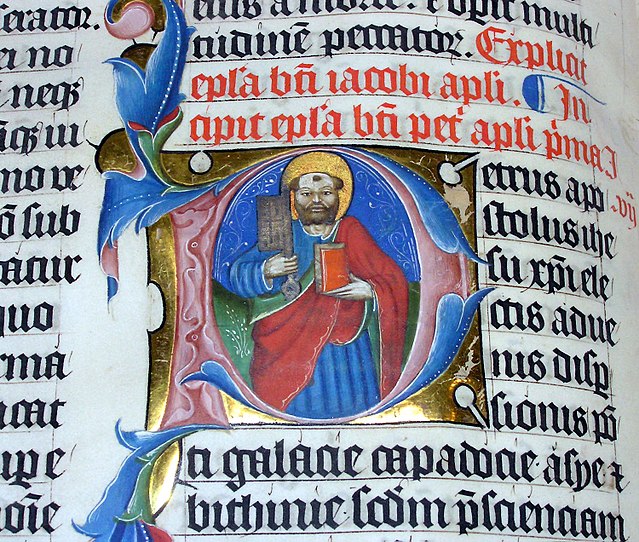Rubrication is the addition of text in red ink to a manuscript for emphasis. Practitioners of rubrication, so-called rubricators or rubrishers, were specialized scribes who received text from the original scribe. Rubrication was one of several steps in the medieval process of manuscript making. The term comes from the Latin rubrīcāre, "to color red", the base word being ruber, "red". The practice began in pharaonic Egypt with scribes emphasizing important text, such as headings, new parts of a narrative, etc., on papyri with red ink.
Rubrication and illumination in the Malmesbury Bible from 1407
Detail from a rare Blackletter Bible (1497) printed and rubricated in Strasbourg by Johann Grüninger
A manuscript was, traditionally, any document written by hand or typewritten, as opposed to mechanically printed or reproduced in some indirect or automated way. More recently, the term has come to be understood to further include any written, typed, or word-processed copy of an author's work, as distinguished from the rendition as a printed version of the same.
Christ Pantocrator seated in a capital "U" in an illuminated manuscript from the Badische Landesbibliothek, Germany (from c. 1220).
Image of two facing pages of the illuminated manuscript of "Isagoge", fols. 42b and 43a. On the top of the left hand page is an illuminated letter "D" – initial of "De urinarum differencia negocium" (The matter of the differences of urines). Inside the letter is a picture of a master on bench pointing at a raised flask while lecturing on the "Book on urines" of Theophilus. The right hand page is only shown in part. On its very bottom is an illuminated letter "U" – initial of "Urina ergo est colamentum sanguinis" (Urine is the filtrate of the blood). Inside the letter is a picture of a master holding up a flask while explaining the diagnostic significance of urine to a student or a patient. HMD Collection, MS E 78.
Inside the letter is a picture of a master in cathedra expounding on the Aphorisms of Hippocrates. Initial "V" rendered as "U" of "Vita brevis, ars vero longa", or "Life is short, but the art is long". "Isagoge", fol. 15b. HMD Collection, MS E 78.
Manuscript, Codex Manesse. Most manuscripts were ruled with horizontal lines that served as the baselines on which the text was entered.






